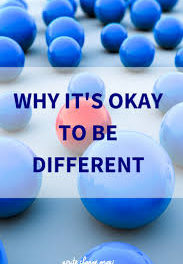Rodger Tucker
Student

What is next after 5G?
Technological advancements continue to happen year after year and we are often wondering, what is next? Will we see more advancements such as holograms, or more green friendly productions?
I believe 5G is the start of a new platform that will keep evolving. 5G only just recently entered the commercial world, and — especially with the higher millimeter-wave (mmWave) frequencies — it has a long way to go before it reaches its full potential. Even so, some researchers and industry members are looking beyond 5G to figure out what comes next.
6G Revolution
6G is expected to focus on solving social issues and a closer fusing of the physical and the cyber-worlds, enabled by an expanded set of higher-bandwidth communications options and by more sophisticated fusion between the physical and cyber realms.
Takehiro Nakamura noted that, while early wireless generations were marked by specific technology differences, later ones have not been so clearly delineated. Instead, existing approaches have been refined and improved. 5G and its evolution will be characterized by:
1. Extending the frequency range;
2. Moving from MIMO to massive MIMO (mMIMO);
3. Moving to polar codes for control channels and to low-density parity codes (LDPC) for data channels
4. The appearance of ultra-reliable low-latency communication (URLLC) and massive machine-type communications (mMTC).
When technology becomes obsolete we tend to throw it out. Many of us are not hoarders and hold onto outdated equipment. So, does our cellular companies do the same with older equipment? Will the billions of dollars spent for 5G be in a similar position 10 years from now?
E-waste Facts
• We generate around 40 million tons of electronic waste every year, worldwide. That’s like throwing 800 laptops every second.
• An average cellphone user replaces their unit once every 18 months.
• E-waste comprises 70% of our overall toxic waste.
• Only 12.5% of E-Waste is recycled.
• 85% of our E-Waste are sent to landfills and incinerators are mostly burned, and release harmful toxins in the air!
• Electronics contain lead which can damage our central nervous system and kidneys.
• The most common hazardous electronic items include LCD desktop monitors, LCD televisions, Plasma Televisions, TVs and computers with Cathode Ray Tubes.
• 300 million computers and 1 billion cellphones go into production annually. It is expected to grow by 8% per year.
Conclusion
As technology advances, so does the resources and material we use for assignments and work. Often, we see hardware and software thrown out more than reused or recycled. We hope that all the money spent is not going to waste and recycled if possible. 5G is a multibillion-dollar investment that seeks to meet the demand of an ever-growing online world. According to many in the telecom world 5G, will be a baseline that will start an evolution.
ABOUT THE AUTHOR
Rodger Tucker
Student Author - Spring 2021







